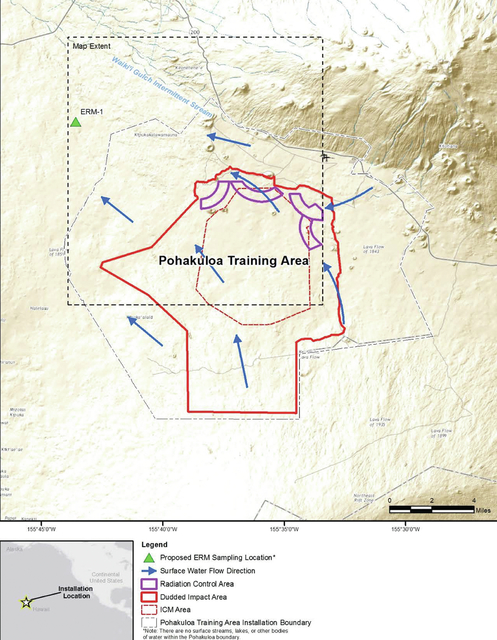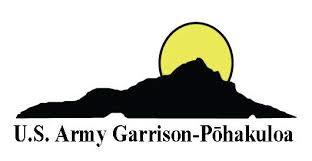POHAKULOA TRAINING AREA — The U.S. Nuclear Regulatory Commission last week approved a radiation monitoring plan for Pohakuloa Training Area and other U.S. Army installations that previously used depleted uranium.
POHAKULOA TRAINING AREA — The U.S. Nuclear Regulatory Commission last week approved a radiation monitoring plan for Pohakuloa Training Area and other U.S. Army installations that previously used depleted uranium.
The plan, approved Thursday, requires sediment sampling in an intermittent stream downslope of its impact area. The plan will go into effect after six months, though the commission will accept a request for a hearing or petition to intervene in the decision by April 10.
The depleted uranium — a dense, weakly radioactive metal alloy — was contained in spotting rounds used in the 1960s as part of the Davy Crockett weapons program.
Jim Albertini, an anti-war activist, said he plans to file a challenge, calling the plan in a press release last week a “sham.”
“This one sample taken every several months from sediment is totally inadequate according to any kind of scientific definition of sampling,” said Albertini, who leads the group Malu ‘Aina.
“It’s got to be air monitoring,” he added. “That’s what we’ve been calling for for years.”
PTA Commander Lt. Col. Chris Marquez said in an emailed statement that the Army takes public concerns related to depleted uranium seriously.
“The sampling location the Army proposed to the (NRC) was selected as the best place to look for sediment carried out of the DU area that might contain DU,” he said.
Eric Hamilton, PTA spokesman, said 140 kilograms of depleted uranium were used in Hawaii, but it’s not known how much of that was at PTA versus Schofield Barracks on Oahu.
The rounds didn’t explode on impact.
In its draft plan, the Army said it’s assumed “most, if not all, of the 140 kilograms” of depleted uranium fired at PTA and Schofield remain in the radiation control areas, where the spotting rounds were fired.
Hamilton said the RCAs make up 5 percent of the impact area and are still in use.
Still, the NRC doesn’t appear to have any significant concerns about depleted uranium becoming aerosolized as a result of use of explosives in those areas.
“In its review … NRC staff concurred with the Army’s position that doses associated with acute events, such as high explosive (HE) activities, were not likely to result in significant risks or necessitating air monitoring,” the commission wrote. “… calculations and experiences documented by the Army show that it’s highly unlikely that any significant airborne transport of DU has occurred via aerosolization of the DU rounds from HE ordinance strikes in RCAs.” If depleted uranium was aerosolized at regulatory limits during the past 50 years, there would be little left at this time, the commission also stated in its evaluation.
The NRC issued the Army a license to possess depleted uranium in 2013 after its past use became known when tail assemblies were found at Schofield about a decade ago. The rounds contained 6.7 ounces of depleted uranium.
The license covers 16 Army installations where the rounds were used, including PTA and Schofield.
PTA encompasses 131,4225 acres on the saddle between Mauna Kea and Mauna Loa.
The NRC received written testimony from two Hawaii Island residents, Cory Harden and Michael Reimer, who asked for more testing.
“The least understandable scenario is that although the Army claims there is no measurable risk, it refuses to conduct simple, comprehensive, and effective monitoring to substantiate that claim and attempts avoidance with NRC approval,” wrote Reimer, who is a retired geologist.
Hamilton said it would take extreme temperatures to aerosolize depleted uranium.
In response to the written testimony, the NRC said it approved site-specific radiation monitoring plans.
The state Department of Health has said the Army’s previous use of depleted uranium, which has 40 percent the radioactivity as naturally occurring uranium, is not considered a “significant health threat.”
Air sampling taken near Waikoloa Village in 2009 found normal background levels of natural uranium and no detectable depleted uranium, the department said. Albertini said air sampling that has been done is too limited.
Email Tom Callis at tcallis@hawaiitribune-herald.com.





